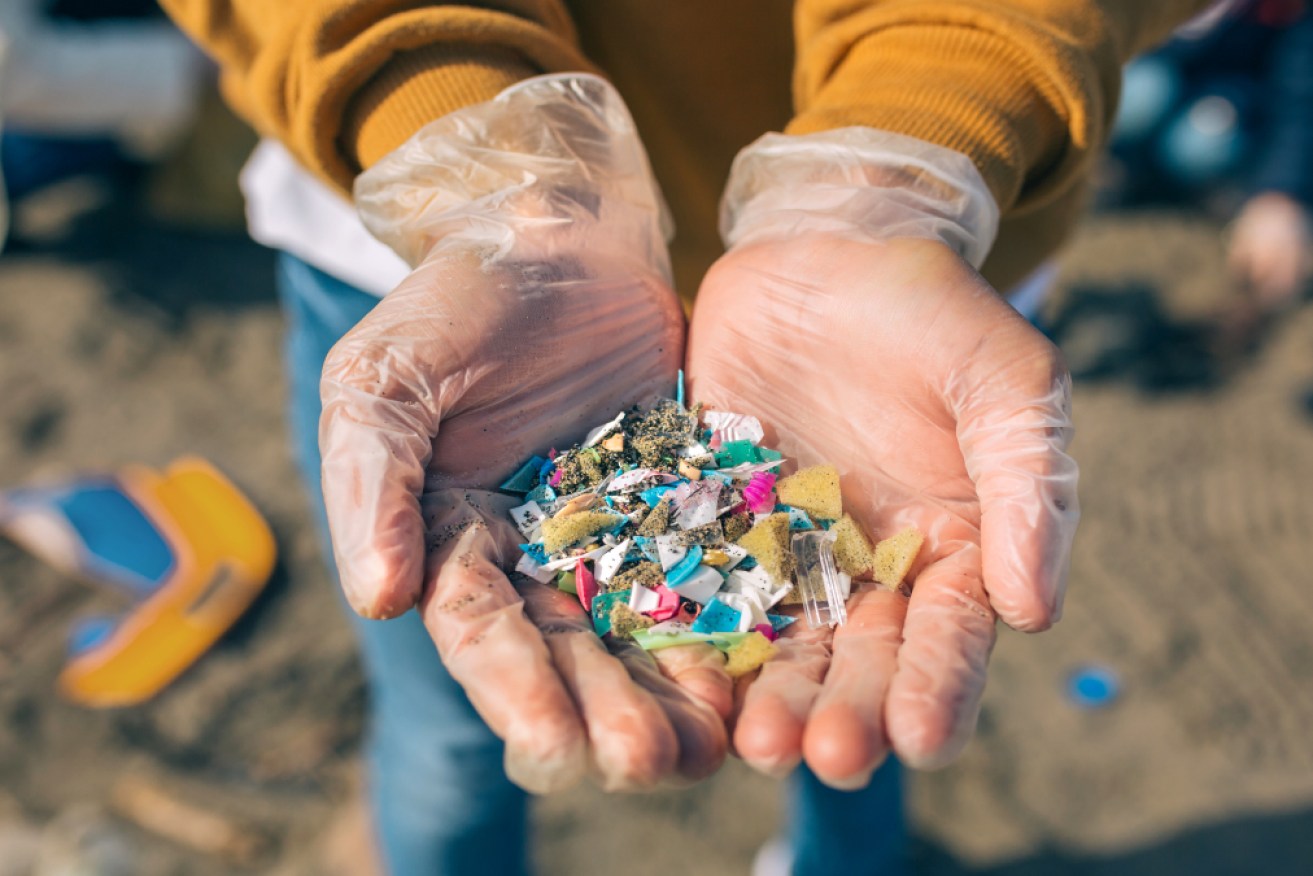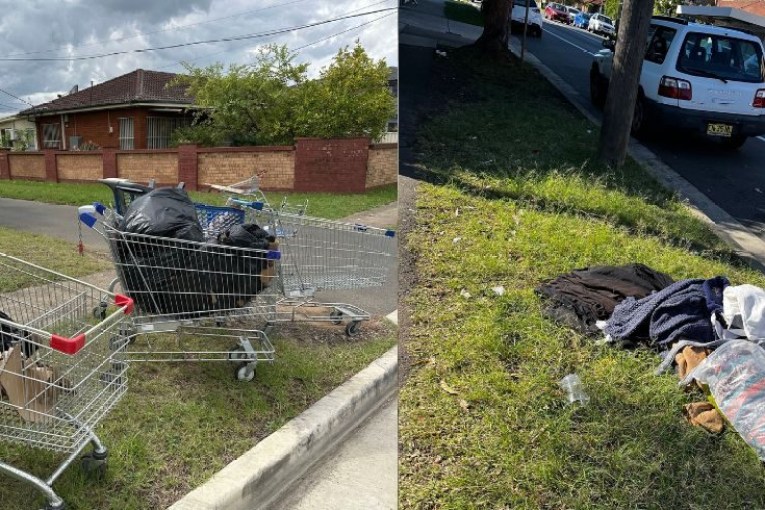Oceans awash with micro-plastic pollution due to ‘unprecedented’ increase


Once micro-plastics enter the ocean, they are incredibly difficult to remove. Photo: Getty
There has been a “rapid and unprecedented” increase in the amount of plastic entering the planet’s oceans since 2005, a new study has found.
The research, published in the journal PLOS ONE, reveals that about 170 trillion particles, mostly made up of micro-plastics, were afloat in 2019.
Researchers say without widespread policy changes, the rate at which plastics enter our waters will increase by 2.6 times by 2040.
Research lead Marcus Eriksen from environmental not-for-profit 5 Gyres said the findings showed an “alarming trend of exponential growth” in the level of micro-plastics.
“This is a stark warning that we must act now at a global scale,” Dr Eriksen said.
“We need a strong, legally binding UN Global Treaty on plastic pollution that stops the problem at the source.”
What are micro-plastics?
Micro-plastics pollution occurs when larger plastic materials break down over time.
Because of the very small size of micro-plastics they are easily mistaken for food by marine creatures like fish and sea birds.
Experts told The New Daily that these plastics can have sharp edges that lacerate the internal organs of marine creatures, causing scarring and affecting the digestive process. This is known as plasticosis.
Unfortunately, once micro-plastics enter the ocean, it is incredibly challenging to remove due to its widespread distribution and sheer quantity.
“Micro-plastics are an emerging contaminant in the world’s oceans, breaking down from larger plastic waste (including bags, bottles and cigarette butts),” laureate professor and CEO of environmental group crcCARE Ravi Naidu said.
“Our oceans – including seafood – are seething with disintegrating plastic particles. Plastic nanoparticles are particularly dangerous, as they can penetrate almost any body part, including the brain.
“Nanoparticles can cause harm over alarmingly long timescales.”

A handful of plastic washed ashore at Kamilo Beach, Hawaii. Photo: 5 Gyres Institute
What causes micro-plastics?
In a word – us.
The spread of micro-plastics, or plastics in general, is not surprising given the heavy reliance on the material.
About 450 million tonnes of plastic are produced a year, and according to the World Economic Forum, production could triple from 2016 levels by the year 2050.
It’s important to note plastics aren’t all bad. From medical devices to construction, there are many worthy uses for the material.
“Much as we tend to hate on plastics, we might also remember that they are made for a reason, and they do have benefits,” professor of chemistry at RMIT University Oliver Jones said.
“They protect our food from spoilage for instance, and insulate our homes, and, while we don’t do a good job of it, they can be recycled,” he said.
The problem lies in the way we manage plastic and think about it as a disposable waste, according to environmental public health scientist Dr Paul Harvey.
“Instead, we need to shift our mindset and think of plastic waste as a valuable resource that can be commoditised and repurposed,” Dr Harvey told TND.
He said currently plastic waste has no real purpose after we finish using it, leading to it being discarded carelessly in landfills or as litter.
Eventually, it makes its way into our oceans, where it breaks down into micro-plastics that have harmful effects on marine organisms.
“It’s crucial that we change our approach to plastic waste management to prevent further harm to our environment,” Dr Harvey said.
What’s being done?
According to experts, the first step to solving the issue of plastic pollution is for policymakers and governments to engage in productive conversation.
“There’s a lot of noise surrounding the topic, with some individuals advocating for high-level approaches to managing plastic pollution,” Dr Harvey said.
“However, policymakers and waste management decision makers are struggling to come up with practical solutions due to the lack of robust discussions taking place.”
He said leaders need to be strong and make tough decisions, even if they risk becoming unpopular with the electorate or losing political donations.
“Making the right decision is essential in combating these problems,” he said.
Dr Charlene Trestrail is an ecotoxicologist at University of Technology Sydney. She told TND that policymakers need to implement regulations aimed at reducing the use of disposable plastics.
“[Disposable plastics] easily fragment into micro-plastics and contribute to the problem,” she said.
“Ultimately, the problem of micro-plastics underscores the importance of reducing plastic waste and using alternative materials where possible.”
What can consumers do?
Experts say individuals have the power to make a difference by making simple changes and being conscientious consumers.
“Although some argue that individuals cannot solve the problem of plastic pollution, this is not entirely true,” Dr Harvey said
“Consumers can choose products that contain less plastic or no plastic at all, and they can also join forces to create communities that refuse to use single-use or non-essential plastics.”
The outlook
The cut-off for the new study was 2019, with some experts saying the situation may have deteriorated since then.
Dr Harvey said due to the COVID-19 pandemic, there has been a significant increase in personal protective equipment waste, such as face masks and the components used in RAT tests.
Many of these products contain plastic materials such as polypropylene, polyester or vinyl.
Dr Harvey is worried much of this refuse has wound up in the ocean.
“There is a shift in the type of waste found during beach and river clean-ups,” he said.
“Previously, single-use plastic bags were the main culprit, but they have now been banned in many parts of Australia and internationally.
“The new type of waste being found is primarily PPE, including face masks. It is likely that this increase in PPE waste will result in more of it ending up in the oceans.”








